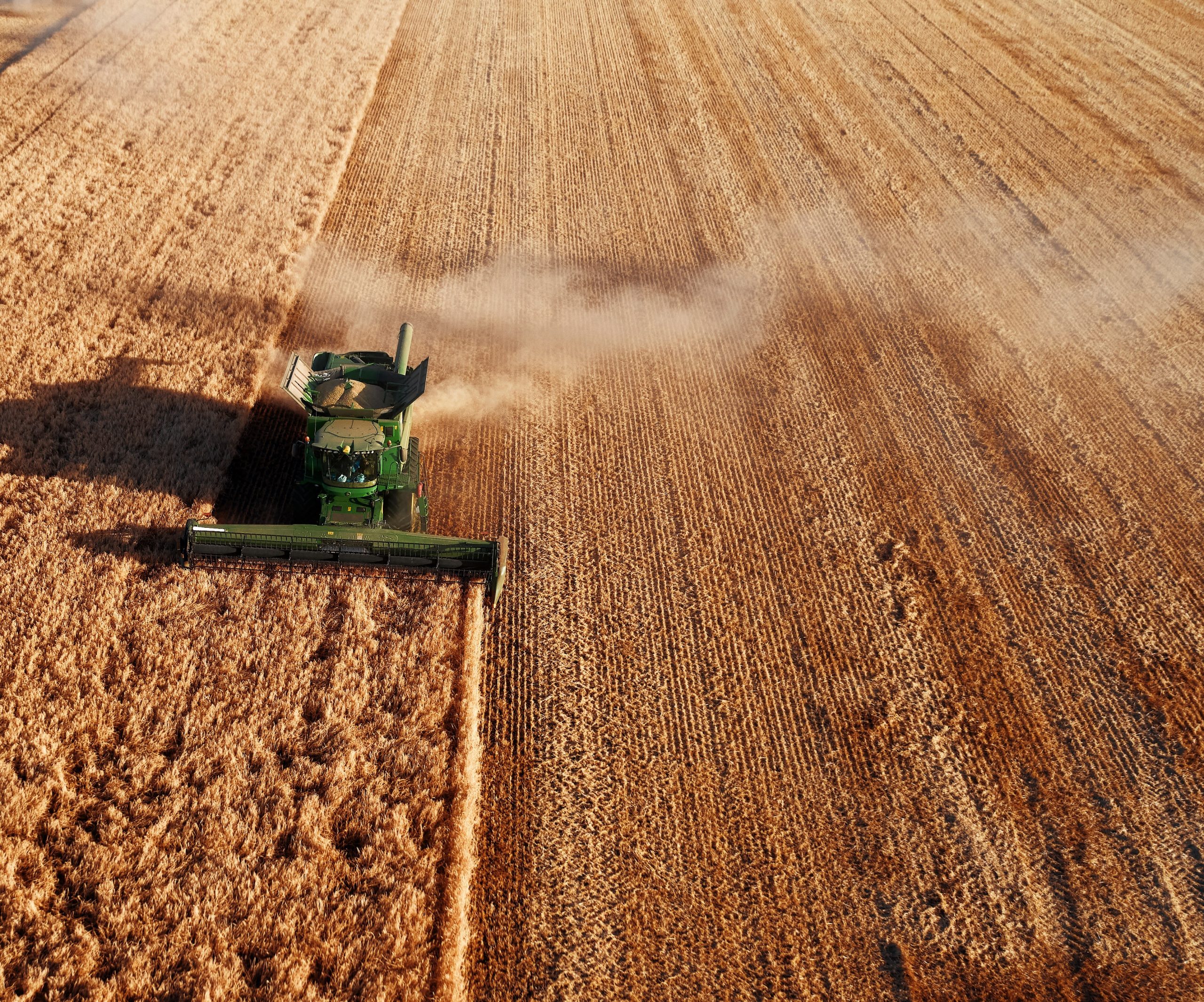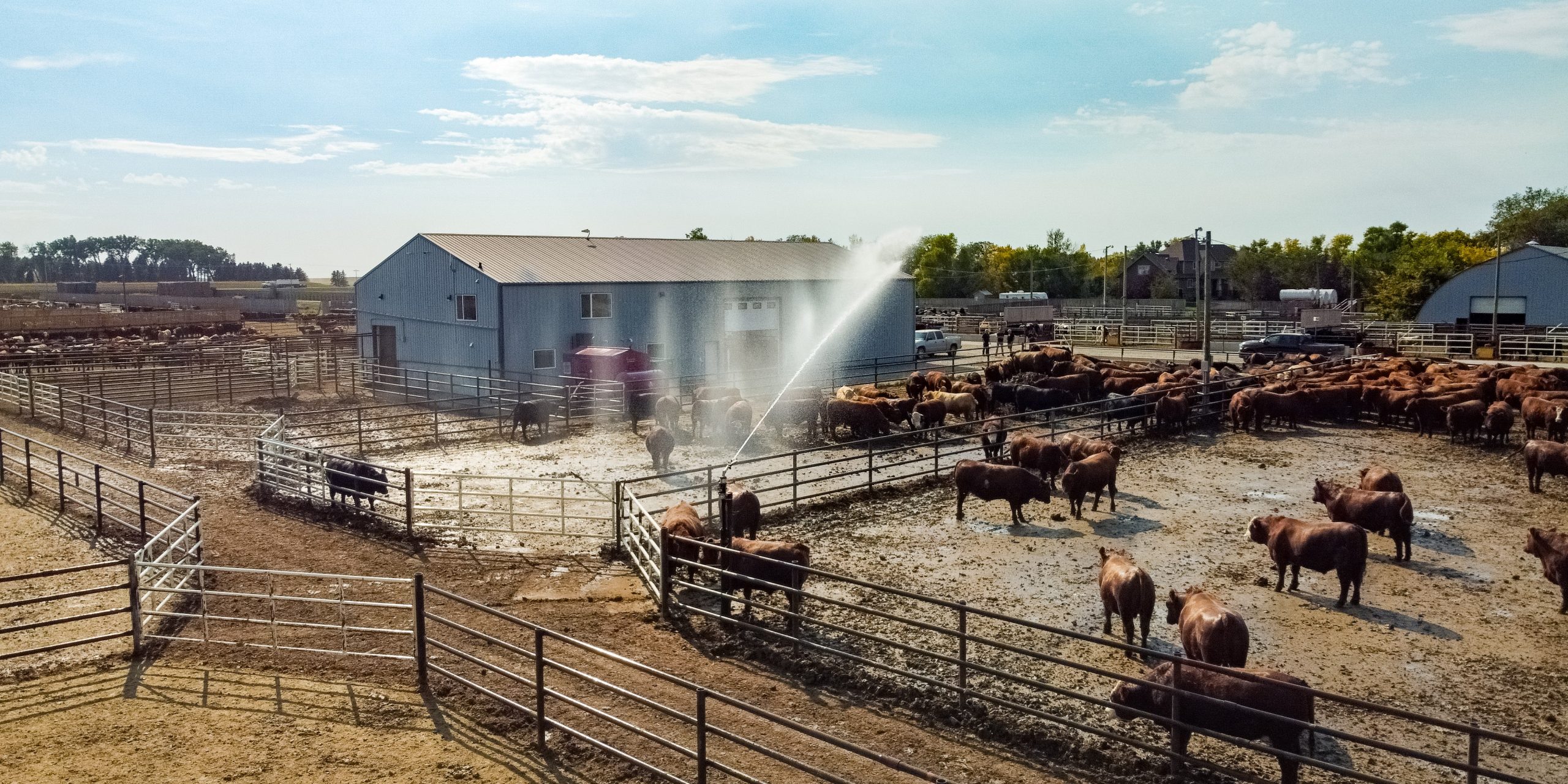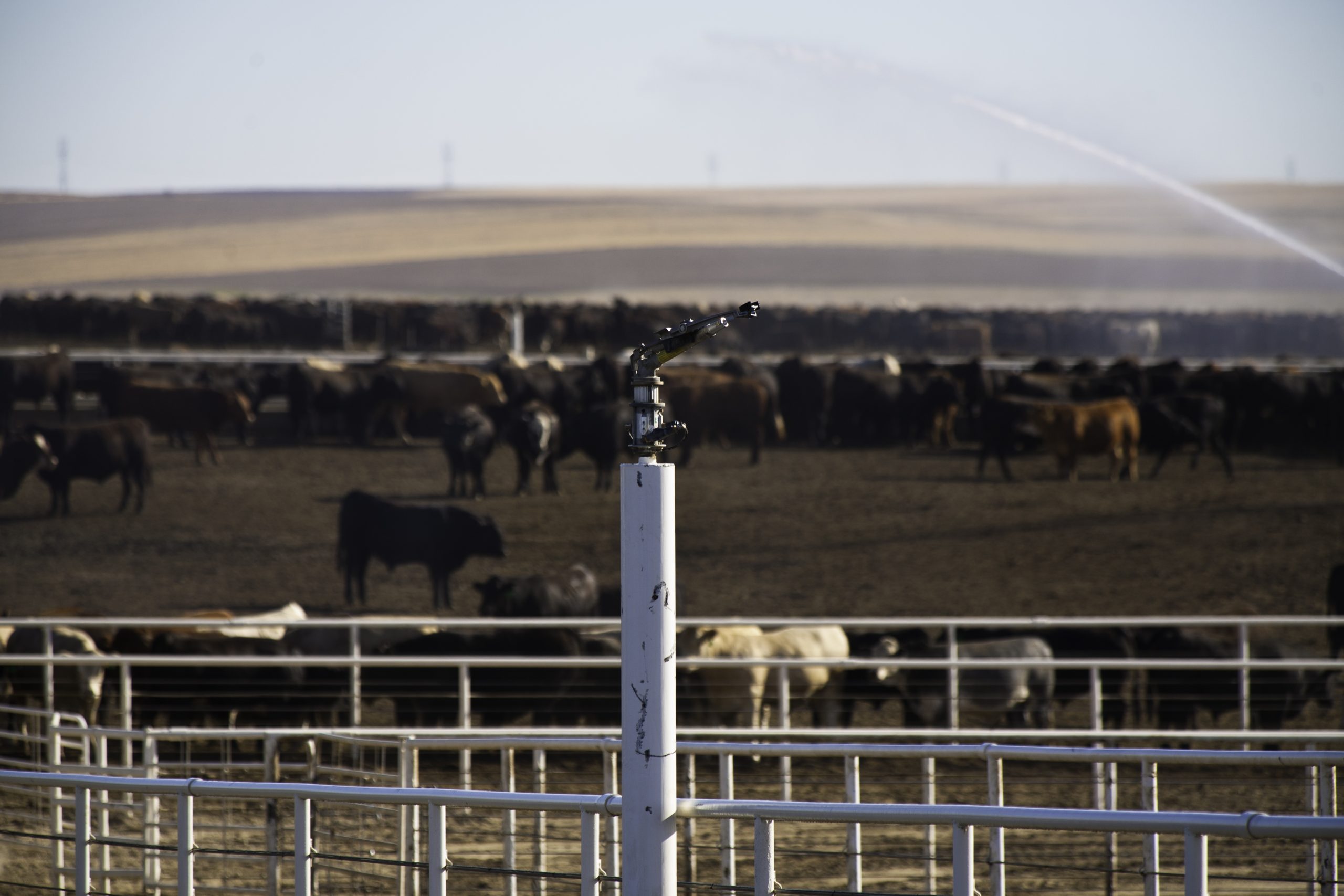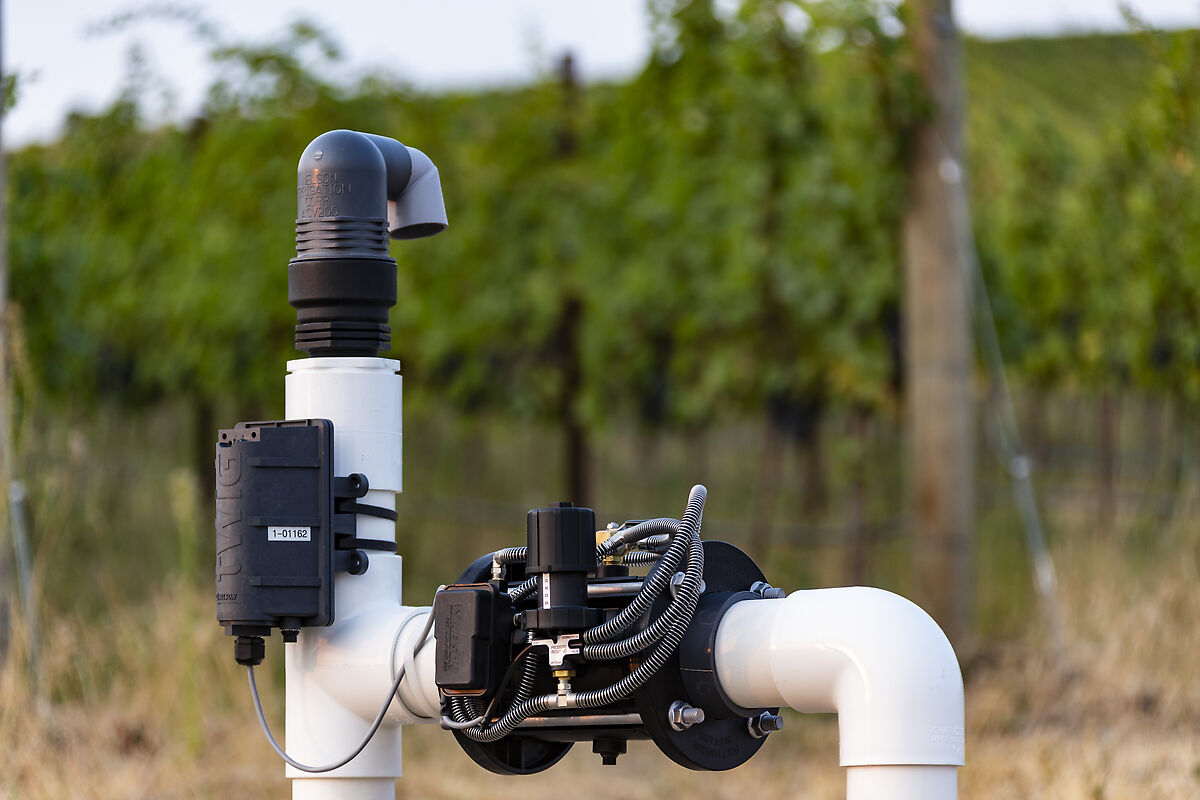How controlling airborne particles can vastly improve conditions on farm feedlots, lumber mills, construction sites and mine quarries
HOW IS DUST CREATED?
Dust can come from natural processes including erosion of rocks and soil, and pollen from plants. Human activities such as construction, manufacturing, and vehicle emissions contribute significantly to dust generation. Dust particles vary in size, with smaller particles being more easily suspended in the air and capable of traveling longer distances. On farms, It can also be generated from the handling and processing of manure, especially in dry and windy conditions.

Health and Environmental Impacts of Dust
HUMAN HEALTH RISKS ASSOCIATED WITH DUST
Breathing in dust particles can lead to respiratory issues like coughing, wheezing and shortness of breath. Long periods of exposure to certain types of dust, such as silica or asbestos, can cause serious lung diseases including silicosis, asbestosis, and lung cancer.
Some types of dust may contain hazardous substances like heavy metals or chemicals, which can have systemic effects on the body if absorbed or ingested. Proper dust control measures are essential to minimize these health risks and protect people from the harmful effects of dust exposure.
AIRBORNE DUST PARTICLES AFFECT THE ENVIRONMENT
Large amounts of dust can reduce air quality, impair visibility, and interfere with the climate system by influencing weather patterns. When deposited on land or water, dust can alter soil fertility, affect plant growth, and contaminate water bodies, posing risks to ecosystems and biodiversity. Excessive dust can even damage infrastructure like buildings, machinery, and electronics.
AIRBORNE DUST EFFECTS ON BEEF COWS
Dust particles in agricultural settings increase the risk of Bovine Respiratory Disease and Acute Interstitial Pneumonia. When cows are exposed to excessive farm dust, whether in feedlots, barns, or grazing areas, it can lead to a range of health issues and costly veterinarian bills. Inhaling airborne dust particles can irritate their respiratory system, causing coughing, wheezing, and reduced lung function. Prolonged exposure may contribute to chronic respiratory conditions, decreasing overall feed efficiency and weight gain in the animals.
Benefits of A Dust Suppression System

DUST CONTROL IMPROVES WORK ENVIRONMENTS
Dust suppression is crucial in mines, feedlots, construction sites, quarries and lumber mills for many reasons. It enhances safety by improving visibility and reducing the risk of accidents. Excessive dust can be harmful to workers and nearby communities. By implementing effective dust control measures such as sprinklers, misters and dust barriers, the levels of airborne dust can be heavily minimized, safeguarding worker health and mitigating the impact on the environment.
DUST CONTROL REDUCES OPERATIONAL COSTS
Dust can be minimized in feedlots and grazing areas which plays a big role in optimizing cattle growth, as it lessens the risk of respiratory issues and related health concerns. This means reducing costly veterinarian bills and time spent dealing with health issues.
For equipment and machinery, by mitigating the airborne particulates that contribute to equipment wear and tear, dust suppression helps prolong the lifespan of expensive machinery, resulting in reduced equipment servicing, maintenance and replacement costs.
Ultimately, dust suppression provides a great return on investment, promoting healthier livestock, happier and healthier employees, higher operational efficiency, and proactively reducing servicing and maintenance on your machinery.
“SOUTHERN IRRIGATION DESIGNED A GREAT SYSTEM AND EXPLAINED HOW EACH GUN WOULD IMPACT THE FEEDLOT.”
Brad Deleeuw, Kolk Farms
Considerations when Researching Dust Suppression Systems
THE SIZE OF DUST PARTICLES
Dust particles can vary in size, ranging from large visible particles to fine microscopic ones. The size of the particle influences how effectively they can be controlled by different dust suppression methods. Bigger particles can be easier to manage, while smaller particles can linger in the air for extended periods of time. For these small particles, dust suppression technologies like misting systems or sprinklers can successfully control them.

CONDITIONS OF YOUR FARM OR WORKSITE
When evaluating dust suppression for worksites and farms, the conditions play a crucial role in determining the most effective strategies. Factors such as the size of the area, weather conditions, availability of water and the nature of the activities being carried out are important factors.
For large farms and expansive worksites, efficient and scalable dust control measures, like water spraying systems, may be needed to cover vast areas effectively. Understanding weather patterns in the area is crucial, as wind direction and intensity can affect the spread of dust and the effectiveness of suppression methods. Specific activities, such as livestock handling can generate varying levels of dust and need specific approaches to mitigate their impact.
Having a comprehensive assessment of these conditions will allow you to choose the most effective dust suppression solution(s), ensuring a safer and more productive environment for both workers and livestock.
The Most Popular Dust Suppression Method in Canada
Common dust suppression methods using sprinklers involve the controlled application of water or other dust suppressants to reduce airborne dust particles. Sprinkler systems can be installed in various configurations, depending on the specific dust-generating activities and the size of the area to be covered.
BIG GUN SPRINKLERS
The Nelson Big Gun Sprinklers have a wide range of pressures and flow rates. These sprinklers are built for the corrosive environments typical of industrial sites and can easily handle agricultural environments. They can be mounted on tall risers or towers to increase coverage.
THE NELSON TWIG SYSTEM
The Nelson TWIG Wireless System simplifies programming and operating a dust suppression systems by using a mobile app via Bluetooth or WiFi. It eliminates troublesome wires and complicated controls and lets you turn on irrigation valves with a few clicks remotely.
The Best Practices For Effective Dust Suppression
MAINTENANCE OF DUST SUPPRESSION EQUIPMENT
Regular inspection and servicing of dust suppression equipment play a pivotal role in ensuring a safe and efficient work environment across various industries. This ensures the equipment operates at its optimal efficiency, reducing the risk of malfunctions and potential hazards. By conducting routine checks, potential issues can be identified and addressed proactively, preventing costly breakdowns and downtime.
EDUCATING WORKERS ON USING DUST SUPPRESSION SYSTEMS
By understanding the risks associated with dust particles, workers can take appropriate precautions. Proper training helps them recognize potential hazards and learn how to operate dust suppression equipment effectively, ensuring its optimal use.
Kolk Farms Case Study

Kolk Farms is a family-owned operation that started with an 80-acre parcel of irrigated land with a 20-acre contract of sugar beets. It is now owned and operated by the third and fourth generation. It farms both irrigated and dry land crops which is closely tied to their feedlot operations which produces 20 million pounds of beef per year.
Kolk Farms approached Southern Irrigation, asking for help with their dust issue. Southern Irrigation designed and implemented a unique system that uses water to control dust in a user-friendly and automated way. This system has saved them labour and time as no one has to monitor it or spend time switching the valves. Using the Twig system, they can control the whole system from an app on their phone. It is very easy to use, and simple to set up. The system runs for 8-10 minutes in the morning and the afternoon; in the fall they will move to shorter cycles as water is not needed as much to control dust.
Kolk Farms’ Cattle Nutrition Manager, Brad Deleeuw has had a great experience after using dust suppression in the feedlot. “Southern Irrigation designed a great system and explained how each gun would impact the feedlot,” he said.
Serfas Farms Turns to Feedlot Water Solutions

The Serfas family decided to expand their business and build a facility for a 40,000-head feedlot from the ground up near Enchant, Alberta. Serfas’ project was more complex than typical feedlot expansions due to its size. The farm had an automated dust suppression system and a feedlot run-off repurposing system installed.
Southern Irrigation designed a solution to meet the feedlot’s specific needs, provided detailed drawings and supplied all materials required. Afterwards, Southern Irrigation provided phone support, on-site visits and installation.
Learn more about the Dust Suppression products Southern Irrigation carries, or Contact Us for expert advice on how to choose the right solution for your agricultural, commercial or industrial site.
Sources:
- T.Lake Environmental Design – Dust Mitigation Techniques For Construction Sites and Haul Roads
- Government of British Columbia – Farm Practices
- ABC Dust – Dust Effects on Agricultural Soil
- Nelson – Dust Suppression
- Canadian Forest Industries – Dust Control at the Sawmill


